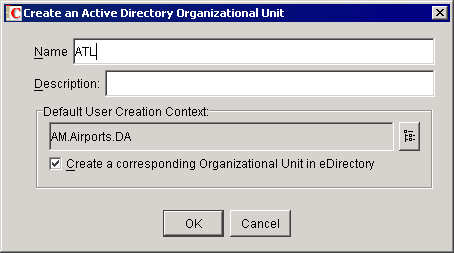Log in as .Admin.DA.
Close the Password windows.
Launch ConsoleOne from the Windows desktop.
In the next steps, you will create three Active Directory Organizational Units (OUs) and map them to existing containers.
Browse to .DA-Domain.DA-Domain.ADforest.DA > right-click the DA-Domain domain object > click New > click Organizational Unit from the pop-up menu.
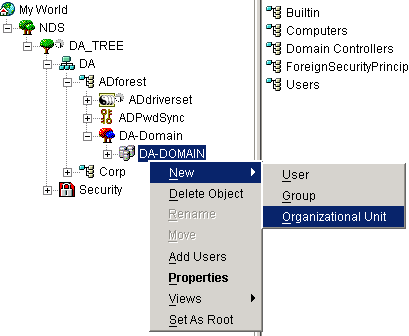
In the Create an Active Directory Organizational Unit window, type DA in the Name field > change the Default User Creation Context to DA by using the browse button > click OK.
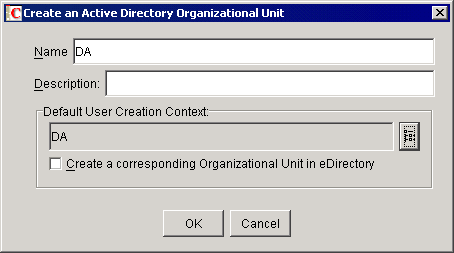
Locate the newly created .DA.DA-Domain.DA- Domain.ADforest.DA organizational unit, right-click it > click New > click Organizational Unit from the pop-up menu.
If you find that the New option is not available, you may need to stop and re-start the NDS Server service in the services Control Panel applet. At time of publication, the author is unaware of an appropriate fix for this issue.
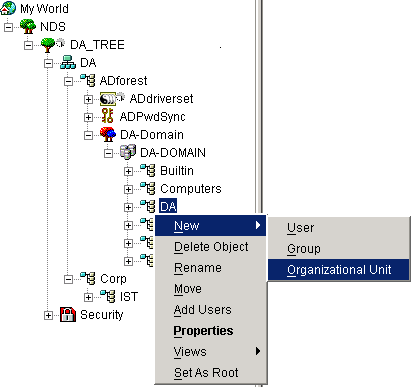
In the Create an Active Directory Organizational Unit window, type Corp in the Name field > change the Default User Creation Context to Corp.DA by using the browse button > click OK.
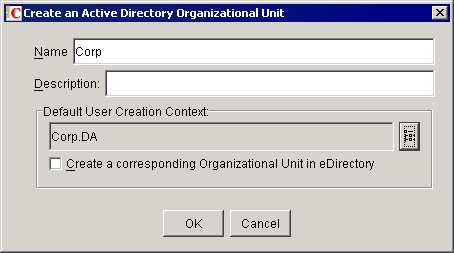
Right-click the newly created .Corp.DA.DA-Domain.DA-Domain.ADforest.DA organizational unit > click New > click Organizational Unit from the pop-up menu.
In the Create an Active Directory Organizational Unit window, type IST in the Name field > change the Default User Creation Context to IST.Corp.DA by using the browse button > click OK.
In the next set of steps, you will create three new Active Directory OUs and automatically create new eDirectory OUs to which the AD OUs will map.
Right-click the .DA.DA-Domain.DA-Domain.ADforest.DA object > click New > click Organizational Unit from the pop-up menu.
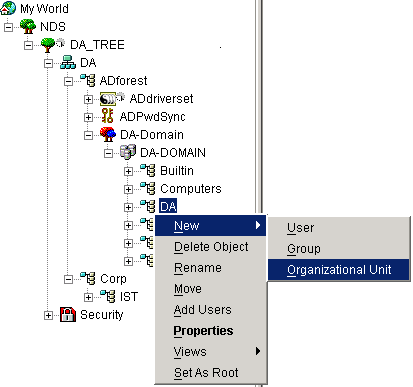
In the Create an Active Directory Organizational Unit window, type Airports in the Name field and change the Default User Creation Context to DA by using the browse button > enable Create a Corresponding Organizational Unit in eDirectory > click OK.
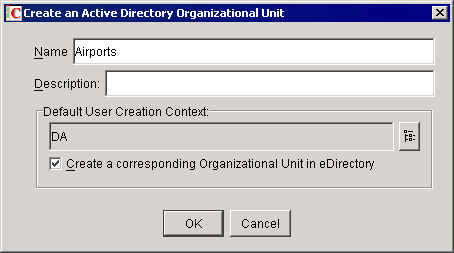
Right-click the .Airports.DA.DA-Domain.DA-Domain.ADforest.DA object > click New > click Organizational Unit from the pop-up menu.
In the Create an Active Directory Organizational Unit window, type AM in the Name field and change the Default User Creation Context to Airports.DA by using the browse button. Enable the Create a Corresponding Organizational Unit in eDirectory option > click OK.
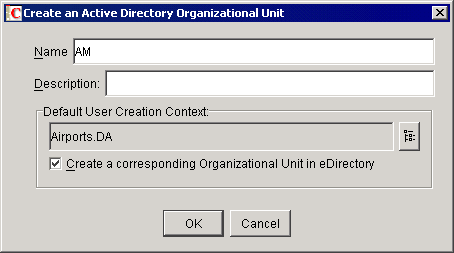
Right-click the .AM.Airports.DA.DA-Domain.DA-Domain.ADforest.DA object > click New > click Organizational Unit from the pop-up menu.
Type ATL in the Name field and change the Default User Creation Context to AM.Airports.DA by using the browse button. Enable the Create a Corresponding Organizational Unit in eDirectory option > click OK.
